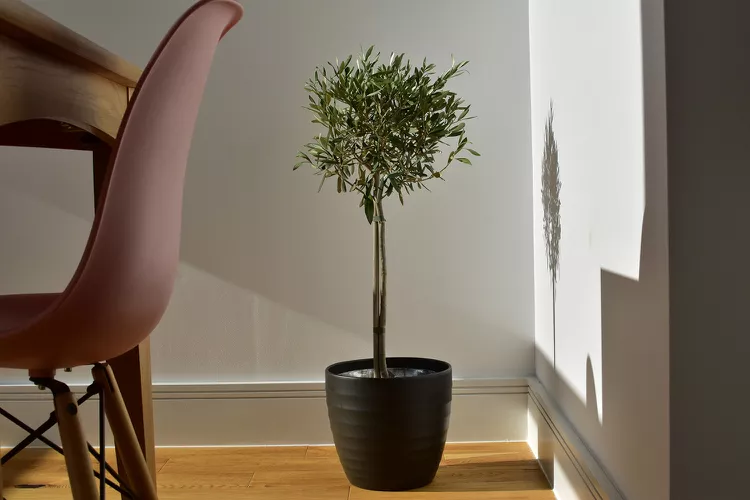Olive trees are beautiful plants known for their slender, slivery green leaves and of course their tasty edible fruit. Hailing from the warm Mediterranean region, this plant can't take a lot of cold, but you can grow it indoors as a houseplant no matter where you live. To keep your indoor olive tree thriving, you'll need to give it plenty of light, but not too much water, and watch out for certain pests. Here's what you need to know to grow olive tree indoors successfully. Your tree might even produce fruit over time!
Growing Olive Trees Indoors vs. Outdoors
Olive trees are evergreens native to the Mediterranean region. “There are numerous varieties," says Ray Greenstreet II, owner of Greenstreet Gardens in Virginia, "but olive trees can be divided into two categories: olive trees that you can harvest, and ornamental olive trees that do not produce any fruits.”
Both types of olive trees prefer warmer environments and are sensitive to freezing temperatures. Because of this, growing olive trees outdoors can be a bit tricky in places with cold winters. “They grow best outdoors when planted in a subtropical climate (mild winters and dry summers),” says Greenstreet. If your landscape doesn’t meet those conditions, growing olive trees indoors is an alternative.
How do you care for an indoor olive tree?
Be sure to give your olive tree plenty of light, preferably through a south-facing window, to help it thrive in an indoor environment. If you don't have enough natural light, get a full spectrum grow light to supplement.
It’s also important to keep the potting soil moist, but don’t overwater your tree. "Olive trees need moist but well-drained soil. "When an olive tree gets too dry, it will naturally defend itself and all the leaves will drop at once. Don’t panic though. Foliage will regrow quickly so don’t give up on your tree if this happens,” says Greenstreet.
As for pests, "scale is a common issue seen on olive trees," says Greenstreet. He advises checking your tree's leaves and stems often for the tiny, brown, bumpy bugs. Neem oil can help get rid of scale safely.
Pruning Indoor Olive Trees
When olive trees grow, they will shoot upwards and out like an umbrella. “Olive trees produce natural layers and are slow growers, so pruning is often not needed,” says Greenstreet. “If you need to thin out your tree, remove the tips and lower branches while pruning it to shape. Aim for the spring or early summer season after the tree has produced some buds to prune.”
Repotting Indoor Olive Trees
Repot your olive tree during spring (when the days start to get longer) into a little bit bigger container. This will help promote new growth. “Use a good, organic, well-draining, balanced soil to repot your olive tree,” says Greenstreet. He recommends finding a potting mix that is labeled for palm, citrus, and orchid plants because these mixes usually have higher levels of micronutrients that your indoor olive tree needs.
“When you are repotting your olive tree, don’t bury your plant any deeper than it was in the first pot,” says Greenstreet. “Make sure the roots have plenty of space to grow by filling the bottom of your pot with soil before placing your tree.” Once you've repotted your olive tree and filled in around it with fresh potting mix, water well to help the soil settle around the roots.
Where can you buy an olive tree?
To find an indoor olive tree, try visiting your local garden center. “Olive trees are a bit more difficult to find, so if you are interested, let your local garden center know before the spring season. Most olive trees are imported from the southern regions, and need to be booked in advance,” says Greenstreet. “If you let your garden center know, they will be able to special-order one for you.” There are also several online options for purchasing a potted indoor olive tree.




















